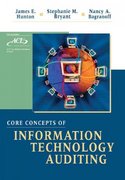Question
1) What is the basis for depreciation of property converted from personal-use to business-use? a) The purchase price. b)The greater of adjusted basis or FMV
1) What is the basis for depreciation of property converted from personal-use to business-use?
a) The purchase price.
b)The greater of adjusted basis or FMV on the date of conversion.
c)The lesser of adjusted basis or FMV on the date of conversion.
d)The FMV to calculate depreciation and adjusted basis to calculate gain or loss.
2) Jamie converted $500 into Bitcoin in November 2018. In October 2019, when the value of his holding had increased to $1,500, Jamie decided to purchase a diamond ring using Bitcoin. He spent the entire holding on the ring. How will Jamie report this on his tax return?
a) No reporting is necessary when purchases are made using virtual currency.
b)He will report $1,500 as ordinary income.
c)No reporting is necessary until he sells the ring. At that time, he will report a gain or loss, depending on the sale price of the ring.
d)As a short-term capital gain of $1,000 on Form 8949. His basis in the ring is $1,500.
3) Gerald owns 465 shares of stock, with a basis of $2,831. The stock split 3 for 1. Gerald now owns ______ shares at ______ per share.
a) 465 shares @ $2.03 per share.
b) 465 shares @ $6.09 per share.
c) 1,395 shares @ $2.03 per share.
d) 1,395 shares @ $6.09 per share.
4) All of the following are deductible business expenses EXCEPT:
a) Membership in the local country club.
b) Protective clothing used in a taxpayer's line of work.
c) An entertainer's theatrical costume, if not suitable for everyday wear.
d) Up to $25 of the cost of a business gift to a current or prospective client.
5) Alice Mae has an interior decorating consultation business and uses her personal car to visit clients. She has used the standard deduction in the past, and knows she needs to track all of the following information in her mileage log EXCEPT:
a) Dates and odometer readings.
b) Total business and commuting miles, as well as the total miles the car was driven for the entire year.
c) The purpose of each trip, as well as the names of any clients present.
d) The cost of fuel, oil changes, and other maintenance items.
6) Maria paid $3,250 interest on a qualified student loan during 2019. She is filing a joint return with her husband, Julio, and their MAGI is $145,000. The maximum amount of student loan interest that Maria and Julio can deduct on their return is __________.
a) $3,250
b) $2,500
c) $2,083
d) $0
7) Which of the following statements is NOT a benefit of having a health savings account (HSA)?
a) After-tax contributions to an HSA are deducted from gross income, even if you do not itemize deductions.
b)Contributions to an HSA can remain in the HSA after the end of the tax year.
c) An HSA is "portable." An HSA will remain in place even if you change employers or leave the workforce.
d)Contributions to an HSA made by an employer are included in income.
8) Riley is single and has no qualifying child. His AGI is $13,495. In order to claim the EITC, he must meet all of the following requirements EXCEPT:
a) He must be between the ages of 25 and 65.
b) He cannot be the dependent of another taxpayer.
c) He must reside in the U.S. more than half the year.
d) He must earn his income as an employee. He cannot be self-employed.
9) Nicholas has two qualifying children for the Child and Dependent Care Credit, Brenda (6), and Frank (9). Nicholas paid $3,000 for Brenda's care, but Frank stayed at a friend's house, so there were no expenses for him. Assuming all other tests are met, how much expense can Nicholas use to calculate his credit?
a) $2,000
b) $3,000
c) $4,000
d) $6,000
10) All of the following are tie-breaker rules for claiming benefits, including EITC, EXCEPT:
a) If the parents are not filing jointly, the parent with whom the child spent the greater number of nights during the year takes precedence.
b) The parent who qualifies and wishes to claim the benefits always takes precedence over a non-parent.
c) Between two non-parents, the person with the higher AGI takes precedence.
d) The parent who files first during the filing season takes precedence over the other parent.
11) Walter's adoption credit exceeds his tax liability for this year. The excess credit is ______________________
a) Nonrefundable and cannot be carried to another tax year.
b) Nonrefundable, but can be carried back two years.
c) Nonrefundable, but can be carried forward five years.
d) Refundable in the current year.
Step by Step Solution
There are 3 Steps involved in it
Step: 1

Get Instant Access to Expert-Tailored Solutions
See step-by-step solutions with expert insights and AI powered tools for academic success
Step: 2

Step: 3

Ace Your Homework with AI
Get the answers you need in no time with our AI-driven, step-by-step assistance
Get Started


